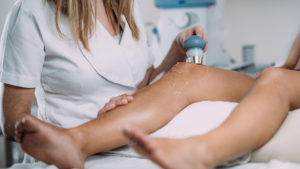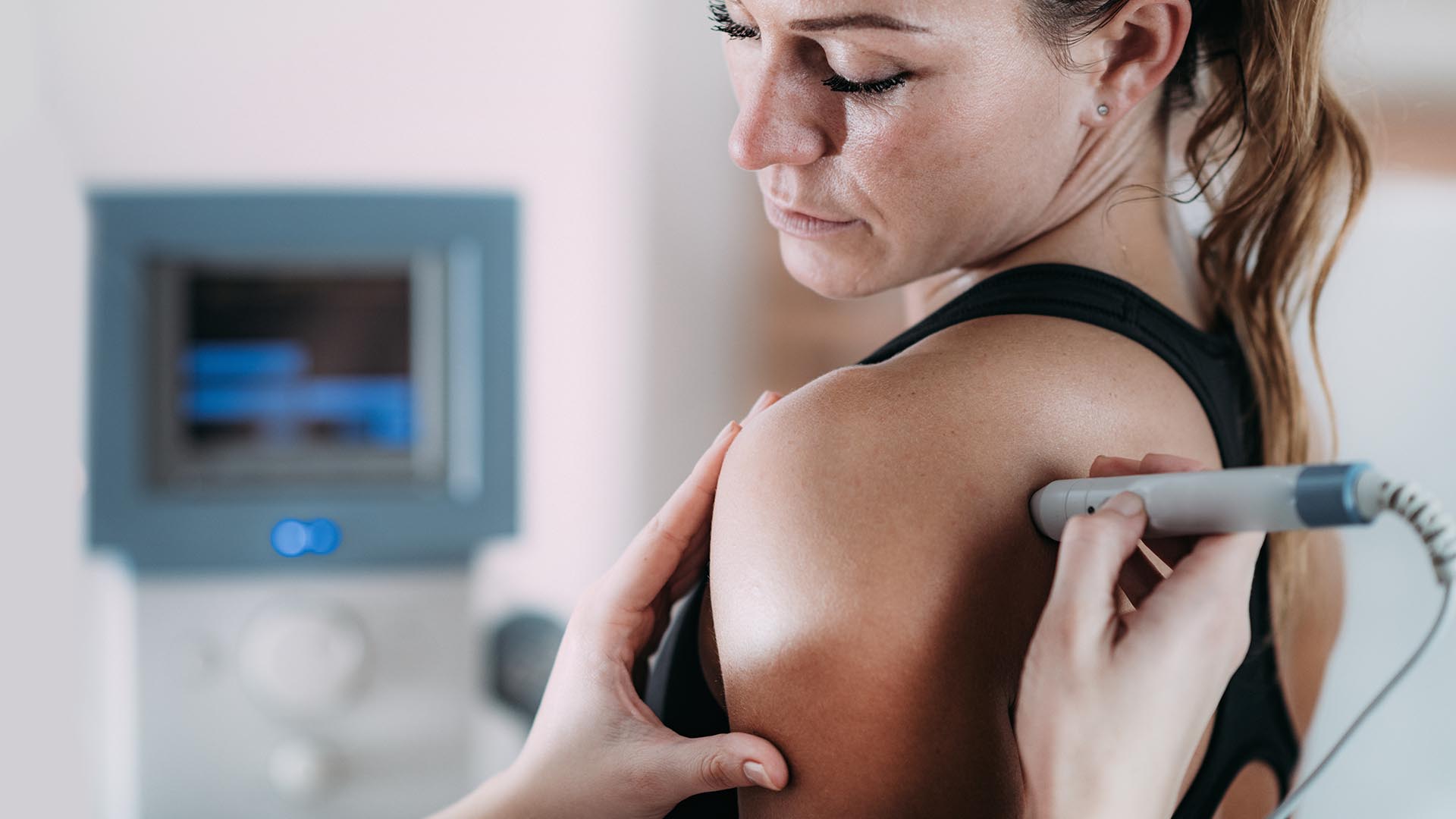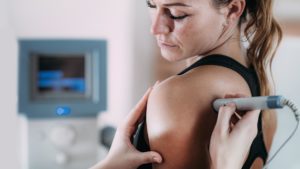Cold laser therapy (CLT), or low-level laser therapy (LLLT), has emerged as a promising, non-invasive treatment alternative offering pain relief, reduced inflammation, and accelerated tissue repair with minimal side effects. Supported by studies showing effectiveness for various conditions including musculoskeletal issues, wound healing, and arthritis, CLT promotes cellular metabolism and healing processes. It uses low-intensity lasers or LEDs without heating tissues to alleviate pain, reduce inflammation, and encourage cell regeneration, making it an effective method for managing pain. At Portland Wellness Care, our team uses the latest cold laser therapy device, providing personalized treatment plans.
For those seeking innovative care, Portland Wellness Care is ready to help you find healing and recovery with state-of-the-art laser therapy.
What is Cold Laser Therapy?
Cold laser therapy is a non-invasive treatment using low-intensity laser or red light-emitting diodes (LEDs) to help relieve pain, stimulate and enhance cell function, and improve healing. Unlike surgical or aesthetic lasers, cold laser therapy doesn’t cause tissues to heat up. It’s used to treat muscle and joint pain, arthritis symptoms, and musculoskeletal injuries. Cold laser therapy aims to reduce inflammation, promote tissue repair and regeneration, making it popular for pain management and rehabilitation in a clinical setting.
The science behind cold laser therapy involves the application of specific wavelengths of light to the skin, where it penetrates the underlying tissues without causing damage or discomfort. At a cellular level, this light is absorbed by the mitochondria, which leads to increased cellular energy production (ATP), enhanced cell proliferation and migration, and the release of cellular signals that promote healing. This process reduces inflammation,and pain, and accelerates tissue repair. It treats acute and chronic pain, soft tissue injuries, and inflammatory conditions, by stimulating the body’s natural healing processes.
The Cold Laser Therapy Device and Machine
Cold laser therapy devices, or LLLT machines are available in portable handheld units for specific areas or larger systems for broader treatment, these devices vary in power, wavelength (600-1000 nm), and design, catering to different depths and conditions. Selection depends on treatment goals and targeted depth.
These devices emit cold light wavelengths directly onto the skin’s surface, where the light penetrates the tissue without generating heat or causing injury. The process is painless and involves placing the device over the targeted area for a duration specified by the treatment protocol, ranging from a few seconds to several minutes.
Benefits of Cold Laser Therapy
Cold laser therapy benefits include pain relief, inflammation reduction, and accelerated tissue repair. By reducing nerve sensitivity and enhancing blood flow, it alleviates pain and decreases swelling, benefiting conditions like arthritis. The therapy’s light photons stimulate cellular metabolism, speeding up the healing of injuries and reducing scar tissue formation. It improves tissue oxygenation and detoxification, supporting overall cellular health.
Research underscores the efficacy of cold laser therapy (CLT), also known as low-level laser therapy (LLLT), across a range of medical conditions, demonstrating its potential in managing pain, enhancing tissue repair, and minimizing inflammation.
Musculoskeletal Conditions: Numerous studies have demonstrated the efficacy of CLT in treating musculoskeletal conditions like tendinitis, carpal tunnel syndrome, and TMJ joint disorders. A review published in “The Lancet” found LLLT reduces pain immediately after treatment in acute neck pain and up to 22 weeks in patients with chronic neck pain.
Wound Healing: Research shows CLT can accelerate the wound healing process, including diabetic foot ulcers, by promoting cell proliferation and increasing collagen production. A study in the “Journal of Clinical Laser Medicine & Surgery” showed significant improvement in wound healing with LLLT compared to control groups.
Arthritis and Joint Pain: CLT effectively reduces symptoms of osteoarthritis and rheumatoid arthritis, including joint swelling and pain. Ananalysis in “Osteoarthritis and Cartilage” reported that patients with knee osteoarthritis experienced significant pain relief following LLLT.
Neurological Conditions: Preliminary studies indicate potential benefits of CLT in treating neurological conditions like traumatic brain injury (TBI) and stroke, by reducing inflammation and promoting neural repair. A study in “Photomedicine and Laser Surgery” found improvements in cognitive function in TBI patients treated with LLLT.
Outcomes vary based on the specific condition being treated, laser parameters, and individual patient responses. Further research and clinical trials are ongoing to better understand the full scope of CLT’s effectiveness and optimize treatment protocols.
Cold Laser Therapy Side Effects
Cold laser therapy (CLT), also known as low-level laser therapy (LLLT), is considered safe when performed by a qualified practitioner. Potential side effects are rare, but can include temporary discomfort at the treatment site, skin irritation, and redness. Avoid direct laser exposure to the eyes, as it can lead to eye injury. Pregnant women are advised against undergoing CLT due to lack of research on its effects during pregnancy. Overall, CLT’s side effects are minimal compared to more invasive procedures.
To ensure the safe use of cold laser therapy (CLT) or low-level laser therapy (LLLT), adhere to these guidelines:
- Professional Supervision: Only qualified professionals should administer CLT.
- Eye Protection: Wear protective eyewear to safeguard against laser exposure.
- Skin and Wound Care: Avoid treating sensitive areas or open wounds without expert advice.
- Pregnancy: Pregnant individuals should consult a doctor before receiving CLT.
- Cancer Caution: Do not apply CLT directly over cancerous regions.
- Pacemakers and Implants: Use caution near pacemakers or electronic implants.
- Accurate Application: Target the laser precisely on the affected area.
- Informed Consent: Patients must be fully informed about CLT risks and benefits.
- Documentation: Maintain records of treatments and patient responses for ongoing assessment.
These precautions help maximize CLT’s benefits while minimizing potential risks.
Does Cold Laser Therapy Work?
Cold laser therapy (CLT) has shown effectiveness in:
- Pain Relief: Alleviates chronic and acute pain, including back and neck pain.
- Inflammation Reduction: Reduces swelling in conditions like arthritis.
- Tissue Repair: Accelerates healing of wounds, sprains, and strains, reduces scar tissue, increases cartilage production.
- Joint Disorders: Eases symptoms of TMJ and other joint issues.
- Nerve Regeneration: Aids in repairing nerve tissue damage.
- Musculoskeletal Injuries: Treats sports injuries and repetitive stress injuries.
- Improve Vascular Activity: Enhances blood circulation, promotes the dilation of blood vessels, reduces swelling and accelerates the healing process.
- Increase Metabolic Activity: Boosts the production of cellular energy, leads to faster tissue repair and regeneration.
- Immunoregulation: Modulates the immune system, reduces inflammation
- Accelerate Wound Healing: Speeds up closure and healing of wounds, reduces scar tissue.
- Accelerate Bone Repair: Accelerates the repair process of fractured or damaged bones.
- Stimulate Trigger & Acupuncture Points: Relieves pain and tension in the muscles.
CLT’s non-invasive nature makes it a versatile treatment for various conditions, promoting healing without side effects.
Experts acknowledge cold laser therapy’s benefits but caution its limitations, noting variability in treatment outcomes and a need for more research. Skepticism exists regarding its efficacy for deep tissue conditions and the optimal parameters for treatment.
Get Cold Laser Therapy At Portland Wellness Care
Cold laser therapy holds promising potential for non-invasive treatment, offering pain relief, reduced inflammation, and accelerated tissue repair with minimal side effects. While further research is needed to fully understand efficacy across different conditions, its current applications in managing pain, enhancing healing, and improving quality of life make it a valuable tool in the medical field. As technology advances and more evidence emerges, cold laser therapy could become an increasingly integral part of holistic healthcare strategies.
At Portland Wellness Care, our providers stay current with the latest research in laser therapy, using a cutting-edge cold laser therapy machine with years of clinical application. We offer top-tier medical services in laser therapy, tailoring treatment plans to meet the unique needs of each patient, from diagnosis through recovery, ensuring excellence at every stage of your care. Contact us today at Portland Wellness Care for more information about cold laser therapy.





